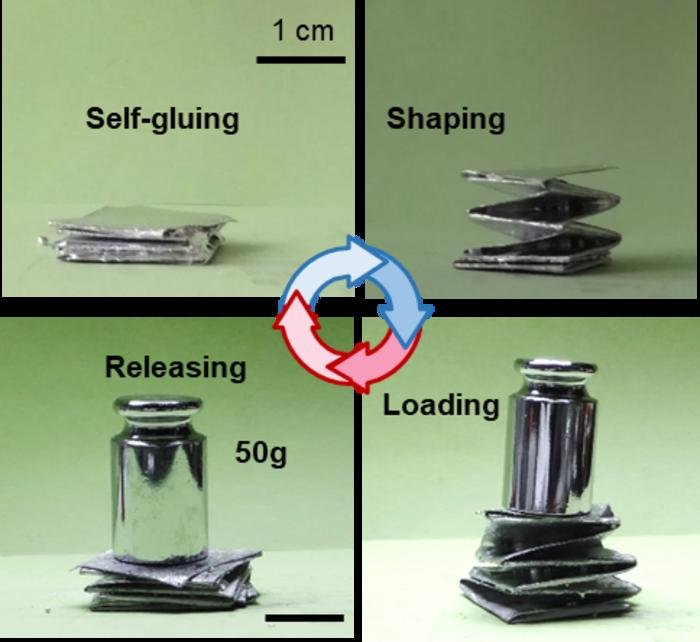According to experts in Beijing, China, everyday materials like paper and plastic might be converted into electronic “smart devices” by utilizing a simple new way of applying liquid metal to surfaces.
 A multifunctional Origami structure built by the liquid metal-treated paper. Image Credit: Cell Reports Physical Science/Yuan et al.
A multifunctional Origami structure built by the liquid metal-treated paper. Image Credit: Cell Reports Physical Science/Yuan et al.
The research, which was published on June 9th, 2023, in the journal Cell Reports Physical Science, shows how to apply a liquid metal coating to surfaces that do not readily bond with liquid metal. The method is intended to work on a large scale and could find use in wearable testing platforms, flexible devices, and soft robotics.
Before, we thought that it was impossible for liquid metal to adhere to non-wetting surfaces so easily, but here it can adhere to various surfaces only by adjusting the pressure, which is very interesting.
Bo Yuan, Study First Author and Scientist, Tsinghua University
Scientists attempting to combine liquid metal with conventional materials have been hindered by the unusually high surface tension of liquid metal, which prohibits it from binding with most materials, including paper.
Previous research has primarily focused on a process known as “transfer printing,” which entails employing a third material to bond the liquid metal to the surface. However, this method has drawbacks: adding extra materials might complicate the process and reduce the electrical, thermal, or mechanical performance of the end product.
Yuan and co-workers utilized two different liquid metals (eGaln and BilnSn) to multiple silicone and silicone polymer stamps, then applied different forces as they rubbed the stamps onto paper surfaces to investigate an alternative method that would enable them to straightforwardly print liquid metal on substrates without sacrificing the metal’s properties.
At first, it was hard to realize stable adhesion of the liquid metal coating on the substrate. However, after a lot of trial and error, we finally had the right parameters to achieve stable, repeatable adhesion.
Bo Yuan, Study First Author and Scientist, Tsinghua University
The scientists found that rubbing the liquid metal-covered stamp against the paper with a tiny amount of effort allowed the metal droplets to bond to the surface effectively; however, applying larger amounts of force prohibited the droplets from staying in place.
The scientists then folded the metal-coated paper into a paper crane to show that the surface could still be folded once the process was complete. Also, as a result, the modified paper retains its usual properties.
While the technology appears encouraging, Yuan pointed out that scientists are still working out how to ensure that the liquid metal coating remains in place after it is applied. For the time being, packaging material can be applied to the surface of the paper, but the team aims to find a solution that does not require it.
Just like wet ink on paper can be wiped off by hand, the liquid metal coating without packaging here also can be wiped off by the object it touches as it is applied. The properties of the coating itself will not be greatly affected, but objects in contact may be soiled.
Bo Yuan, Study First Author and Scientist, Tsinghua University
The team also intends to improve the technology in the future so that it may be used to apply liquid metal to a wider range of surfaces, including metal and ceramic.
“We also plan to construct smart devices using materials treated by this method,” concludes Yuan.
Journal Reference:
Yuan, B., et al. (2023). Direct fabrication of liquid-metal multifunctional paper based on force-responsive adhesion. Cell Reports Physical Science. doi.org/10.1016/j.xcrp.2023.101419.